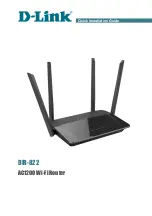
Viper SC+™ IP Router for Licensed Spectrum PN 001-5008-000 Rev. C
| Page 22
2.5.2.
ANTENNA OVERVIEW
Antennas can come in just about any shape or size. However, there is one parameter, in particular, that the system
designer should not overlook, especially if the radio installation uses gas discharge tube lightning arrestors. The
parameter is the DC grounding of the active element in the antenna.
A DC grounded antenna will measure 0 ohms from the active element to ground when tested with an ohm-meter. One
way to test this is to connect the ohm-meter from the center conductor to ground of the RF cable that is attached
directly to the antenna. This will read as a short for a DC grounded antenna, and as an open for a non DC grounded
antenna. Note: Some antenna datasheets are misleading and will indicate the antenna is DC grounded. However, the
datasheet may be referring to the body of the antenna and not necessarily the active element. For this reason, it is best
to measure the antenna you plan to use to verify the active element is DC grounded.
2.5.3.
THE WRONG COMBINATIO N
The combination of a DC open antenna and a DC blocked gas discharge tube lightning arrestor creates a situation
where static charge can build up slowly on the active element of the antenna. Static charge can be created by wind
blowing across the antenna, precipitation hitting the active element, or other environmental causes. As static charge
builds up on the antenna’s active element, over a period of minutes or even hours, the DC blocking capacitor inside the
lightning arrestor is charged.
Figure 14 – Voltage buildup due to static
When the voltage exceeds 600V (the breakdown voltage for IS-B50LN series PolyPhasers), the gas discharge tube turns
on and the antenna side of the DC blocking capacitor is immediately pulled from 600V to 0V. Since the lighting
arrestor’s capacitor was charged to 600V, that charge must dissipate through the radio. As the capacitor discharges, a
large negative transient is created on the antenna port of the radio. Positive transients can also be created if the static
charge buildup on the antenna has a negative polarity.
















































